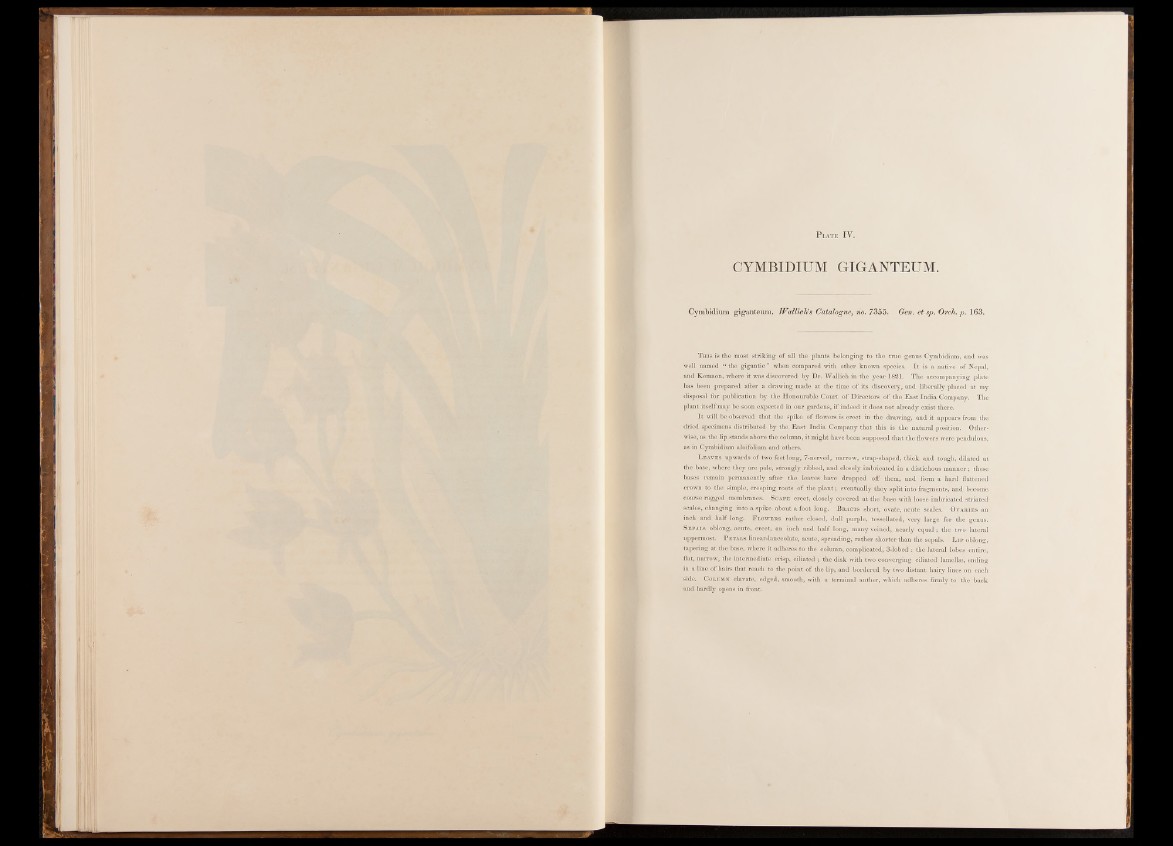
P late IV.
CYMBIDIUM GIGANTEUM.
Cymbidium giganteum, JVallich’s Catalogue, no. 7355. Gen. et sp. Orch.p. 163.
This is the most striking of all the plants belonging to the true genus Cymbidium, and was
well named “ the gigantic ” when compared with other known species. It is a native of Nepal,
and Kemaon, where it was discovered by Dr. Wallich in the year 1821. The accompanying plate
has been prepared after a drawing made at the time of its discovery, and liberally placed at my
disposal for publication by the Honourable Court of Directors of the East India Company. The
plant itself may be soon expected in our gardens, if indeed it does not already exist there.
It will be observed that the spike of flowers is erect in the drawing, and it appears from the
dried specimens distributed by the East India Company that this is the natural position. Otherwise,
as the lip stands above the column, it might have been supposed that the flowers were pendulous,
as in Cymbidium aloifolium and others.
Leaves upwards of two feet long, 7-nerved, narrow, strap-shaped, thick and tough, dilated at
the base, where they are pale, strongly ribbed, and closely imbricated in a distichous manner ; these
bases remain permanently after the leaves have dropped off them, and form a hard flattened
crown to the simple, creeping roots of the plant; eventually they split into fragments, and become
coarse ragged membranes. Scape erect, closely covered at the base with loose imbricated striated
scales, changing into a spike about a foot long. Bracts short, ovate, acute scales. Ovaries an
inch and half long. Flowers rather closed, dull purple, tessellated, very large for the genus.
Sepals oblong, acute, erect, an inch and half long, many veined, nearly equal; the two lateral
uppermost. P etals linear-lanceolate, acute, spreading, rather shorter than the sepals. L ip oblong,
tapering at the base, where it adheres to thé column, complicated, 3-lobed : the lateral lobes entire,
flat, narrow, the intermediate crisp, ciliated ; the disk with two Converging ciliated lamellae, ending
in a line of hairs that reach to the point of the lip, and bordered by two distant hairy lines on each
side. Column clavate, edged, smooth, with a terminal anther, which adheres firmly to the back
and hardly opens in front.